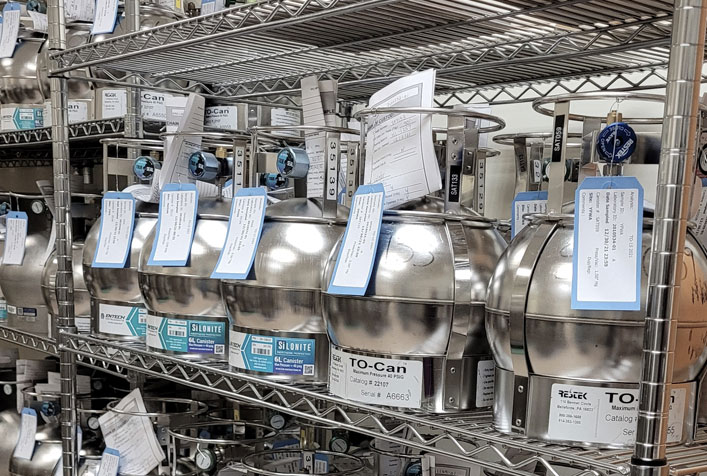Analyzing Emerging Compounds: Ethylene Oxide

Project Brief
The Challenge
In the early 1990s, at the request of the U.S. Environmental Protection Agency, ERG developed a method to sample and analyze volatile organic compounds in air. This method has since been modified to accommodate the more than 60 additional air toxic compounds of concern that EPA subsequently added to the VOC target list, and it has served as the basis for EPA Compendium Methods TO-14A and Method TO-15/TO-15A. In recent years, concern has grown about the human health risks posed by ethylene oxide (EtO), resulting in a dramatic reduction in the risk assessment threshold for EtO. Consequently, EPA asked ERG to adapt the VOCs method to enable detection and quantitation of EtO, if possible, so that EPA could add this compound to the VOC target list.
ERG's Solution
Using traceable EtO standards, ERG analysts determined that, while ethylene oxide could be seen qualitatively with the existing VOCs method, interferences were present that prevented accurate quantitation. To explore potential method refinements that might enable quantitation, ERG took the following steps:
- Evaluated and implemented a new analytical column that was optimal for polar compounds like EtO.
- Adjusted analytical method conditions to chromatographically separate EtO from coeluting compounds.
- Profiled individual summa canister behavior to determine which canisters would minimize EtO “growth” (i.e., concentration increase that creates inaccuracies).
This approach enabled us to develop a VOC method that quantifies EtO, while also meeting National Monitoring Program data quality objectives. The accuracy of ERG’s method has been validated by more than four years of successful proficiency test results since its development. EPA used ERG’s work as the basis for a template the agency provided to state and local laboratories for developing their own techniques for quantitative EtO detection and analysis. In ongoing work, ERG’s laboratory continues to refine this method to increase its sensitivity and meet the stricter requirements of EPA’s Compendium Method TO-15A as documented in the National Air Toxics and Trends Station Technical Assistance Document, Revision 4). To support this work, ERG has installed a zero-air generator for sampler and canister certification and added over 300 canisters with inert coating. These infrastructure improvements will help ensure that we can meet the expanding sampling needs nationwide with increased analytical sensitivity for high-profile, polar compounds such as EtO.
Client
U.S. Environmental Protection Agency